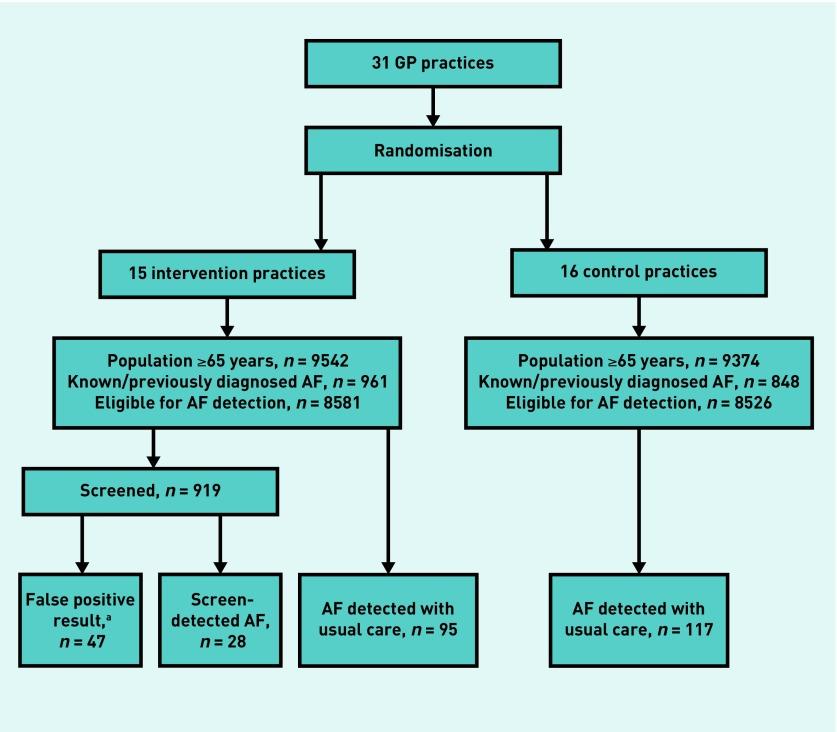Introduction
Atrial fibrillation is a common cardiac arrhythmia and a major cause of stroke, heart failure, and other cardiovascular diseases.1 The prevalence of atrial fibrillation increases with age, and with the ageing population, the burden of atrial fibrillation is growing rapidly.23 Treatment with oral anticoagulant drugs reduces the risk of stroke by 60%. In 25% of patients who have had a stroke, however, atrial fibrillation is not diagnosed until after the stroke.4

Patients with atrial fibrillation might present with symptoms such as palpitations, shortness of breath, light headedness, or dizziness. Physicians can detect an irregular heart rhythm by physical examination and can confirm atrial fibrillation with 12 lead electrocardiography (ECG).5 But the possible paroxysmal character of atrial fibrillation and the occasional asymptomatic course of the condition can hamper detection.6
Screening for atrial fibrillation could increase early detection and subsequent treatment of atrial fibrillation, and prevent strokes, but community screening for atrial fibrillation is still controversial.78 Randomised trials comparing the results of screening with usual care are lacking. Trials evaluating the effect of treating atrial fibrillation detected by screening with oral anticoagulant agents are pending. The Screening for Atrial Fibrillation in the Elderly (SAFE) study is the only randomised controlled trial that has compared screening, by pulse palpation, with usual care, in a primary care population.9 Both systematic (inviting the whole target population) and opportunistic (only screening patients who visited the practice) screening detected more new diagnoses than usual care (yearly incidence of atrial fibrillation 1.62% and 1.64% v 1.04%, respectively). The investigators preferred opportunistic screening because of the more labour intensive, costly, and intrusive approach of systematic screening.
Since the publication of the SAFE study in 2007, numerous devices have been developed to screen for atrial fibrillation (eg, electronic blood pressure monitors with an atrial fibrillation detection function and handheld single lead electrocardiographic devices).10 We performed the Detecting and Diagnosing Atrial Fibrillation (D2AF) study to investigate whether opportunistic screening in primary care patients increased the detection of atrial fibrillation compared with usual care.11 Three methods were used to detect atrial fibrillation: pulse palpation, electronic blood pressure measurement with an atrial fibrillation algorithm, and ECG with a handheld single lead electrocardiographic device. Also, we explored the added value of continuous Holter monitoring for two weeks.
